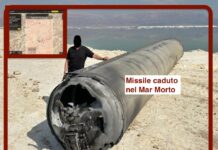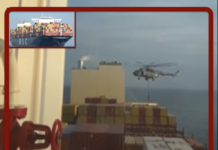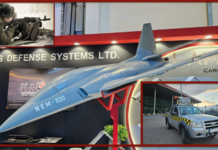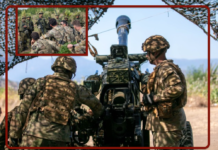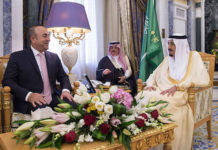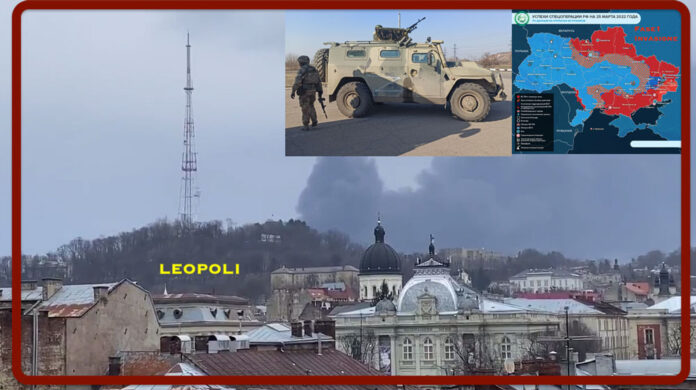
Thirty days after the Russian attack in the Ukraine and with the announcement of the end of the first phase of the Special Operation” military analysts have begun to study the pros and cons of the battle, trying to answer those who maintain that the Russians are losing or in a state of flux and those who instead say that the Russians are proceeding according to plan, to understand where these plans lead, trying, therefore, to answer the fears of the Baltic republics and even more so of Moldavia and Poland.
The points in favour of the Russian advance according to the same analysts are: the presence of a large number of operational-tactical missile systems and cruise missiles of various types, which makes it possible to attack targets all over Ukraine, destroy military infrastructure, complicate the rearmament, supply and replenishment of losses of the Ukrainian armed forces. The presence of a large number of modern attack helicopters capable of operating at night and in SMU, in conditions of advanced enemy air defence. The availability of efficient reconnaissance at the operational-strategic level, ensuring attacks against bases and camps of the Ukrainian armed forces and mercenary units (Yavorov, Nikolaev and other places) at the time of maximum build-up.
On the other hand, neutral notes included the presence of a fairly large group of front-line aviation of the Russian Aerospace Forces, capable of solving tasks from the line of contact to the deep rear, prohibiting large-scale movements of the Ukrainian armed forces. At the same time, given the area of the theatre of operations and the size of the Armed Forces, this grouping is not as large as the Russians claim.
If we compare the current conflict with the NATO operation in Yugoslavia in 1999, then NATO had a grouping of over 1,000 aircraft, which exceeds the entire frontline aviation currently available to the Russian Aerospace Forces, with an area six times smaller than Ukraine, half the size of the armed forces and four times the population. At the same time, Yugoslavia’s air defence capabilities were also immeasurably weaker than those of Ukraine.
Among the totally negative aspects was the lack of tactical reconnaissance and targeting equipment, including UAVs, particularly attack UAVs, which further complicated air force and artillery actions by not allowing enemy equipment to be knocked out quickly enough. Lack of high-precision tactical weapons: corrected aerial bombs, guided artillery shells lead to the same consequences, as well as increased collateral losses. Lack of modern armoured vehicles. Judging from the footage, there are no new generation vehicles on the Armata, Kurganets and Boomerang platforms.
And still no modern logistics facilities (protected trucks, unloading/loading facilities, loading platforms, etc.) were seen in theatre. This is according to analysts a systemic problem of the RF Armed Forces. Finally, according to analysts there is an apparent insufficient readiness of Russian troops for the battle conditions and capabilities of the enemy, confirmed by the frequent effective attacks of the Armed Forces of Ukraine on military columns in the initial period of the operation and, unfortunately, a considerable number of deaths of senior command personnel of the RF Armed Forces, who in a normal situation have nothing to do on the battlefield.
Turning to Vladimir Putin’s stated objectives: the demilitarisation and denazification of Ukraine implies taking control of its main administrative and industrial centres, demobilising the armed forces, reorienting or liquidating the military industry in order to exclude the reconstruction and rearmament of the army. And again denazification in this case implies establishing control over the Ukrainian state and supporting the pro-Russian government, which excludes the continuation of a policy aimed at rapprochement with the West and the imposition of a Russophobic ideology. Both these objectives imply control over the largest Ukrainian cities.
If these objectives remain on the agenda, we should expect the second phase of the Russian operation to mean the deployment of further large forces of the RF armed forces and the development of an offensive with decisive objectives until the indicated result is achieved. Otherwise it will be difficult to talk about demilitarisation, and denazification will simply be impossible: if its main cities are not occupied by Russian troops, a more nationalist and Russophobic regime will inevitably come to power in Ukraine more than it is now. To answer the fears of the Baltic, Polish and Moldovan countries: Putin has never spoken of attacks. Neighbouring countries. At the moment he is aiming at the fall of the Zelenskyj regime.
In the meantime, the Russians have begun bombing Lviv, the mayor of Lvov, Andriy Sadovoy, has confirmed the attack on the city: “We are waiting for information from the Military Administration. Stay under cover.” In Slavutych, where the Russian troops entered, the mayor is negotiating the surrender with the military, occupied the hospital and the main administrative facilities. Ukrainians tried to strike Crimea and defence systems went into action.
Graziella Giangiulio


